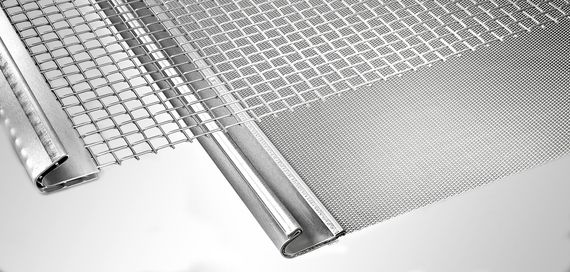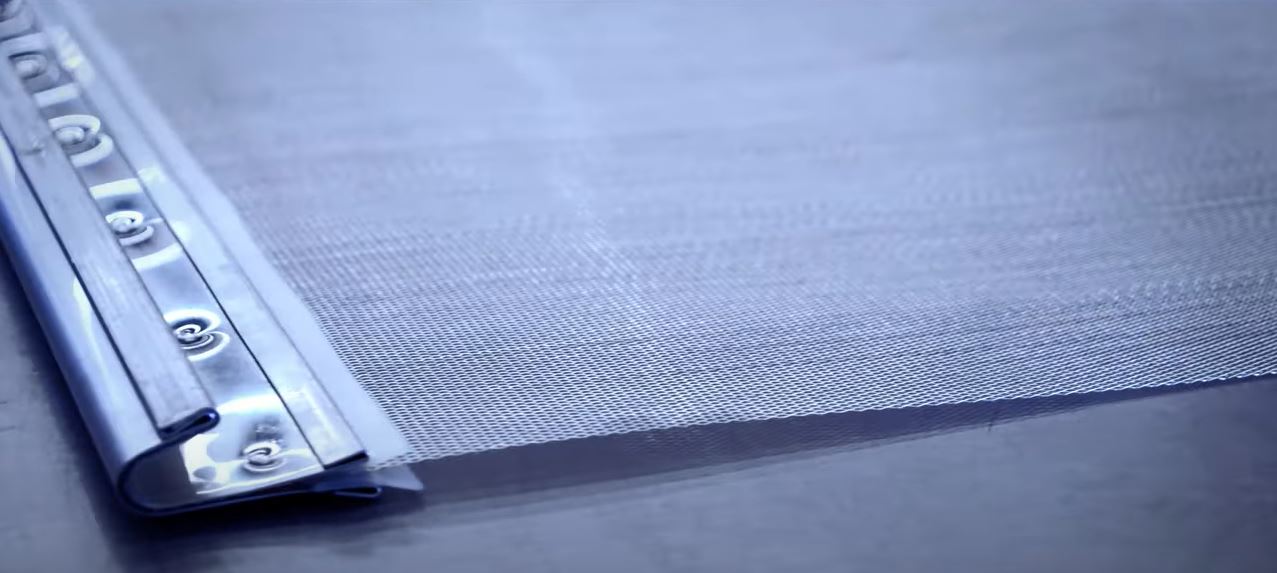Woven Wire Vibrating Screen Sections: Tensioning Your Screen Sections
Operations with the aggregate industry are responsible for things that affect everyday life. Whether it be the decorative stones used to beautify dirt beds along a structure or the asphalt we drive on during our daily commutes, we rely on the aggregate industry heavily.
Regardless of what services your aggregate operation provides, one thing is universal: the importance of accurate particle separation. For this reason, countless aggregate organizations employ woven wire vibrating screens that variating in pore size to create a sense of uniformity through the particles they use.
But as these screen sections must be fully tensioned to deliver peak performance, it is important that you understand how you can achieve adequate tensioning.
W.S. Tyler has been a leading manufacturer of woven wire goods for over 150 years and is here to help you build confidence in your ability to properly screen your aggregate material.
With that, this article was written to help establish everything you need to know about tensioning wire mesh screen sections. You will learn:
- What a woven wire vibrating screen section is
- How woven wire vibrating screen sections work
- Why tensioning your woven wire vibrating screen sections is critical
- The steps you should take to tension your wire mesh vibrating screens
What Is a Woven Wire Vibrating Screen Section?

Woven wire mesh vibrating screen sections are industrial screens used to separate large volumes of aggregate by size. Designed to fit a wide range of vibrating screen machines, woven wire vibrating screens can typically handle a capacity of two to four tons of material per hour.
In terms of specifications, woven wire vibrating screens can be fabricated to accommodate a particle size range of 4 mesh to 325 mesh. This can be done using one or two layers of woven wire mesh.
How Do Woven Wire Vibrating Screen Sections Work?
Woven wire vibrating screens are fitted into a specialized screening machine at a right angle to the aggregate flow direction. This cause the particle to collide with the inside wire of the pore openings, helping to facilitate particle movement.
Typically, you will find three woven wire vibrating screen decks in single vibrating screen machines. The coarsest mesh specification will be secured into the top deck, with the finest mesh specification secured in the bottommost deck.
When screening aggregate material, material will hit the various wires in the weave repeatedly, bounce, find the openings in the mesh, and make their way to the next deck until the mesh openings are too small.
Once compelled, your aggregate particle will have been separated by their size.
The Importance of Tensioning Your Wire Mesh Screen Sections
In order for your screen sections to work as intended, it is critical that they are drum-tight after installation. This requires the correct positioning of both the hook strips and tensioning bar.
Improperly tensioned wire mesh screen sections can result in your aggregate material moving aimlessly within the screening machine, hindering its ability to find the openings in the mesh. In other words, you will find that it is difficult to accurately separate your aggregate particles by size.
Additionally, when not properly tensioned, the wire mesh screen sections have the potential to vibrate aggressively against the support bars. This ultimately raises the potential for faults, failures, and costly damages.
Now, there are two ways in which you can tension your screen sections, depending on your machine: side tensioning and end tensioning.
Side tensioning places the screen sections across the direction of material flow and usually requires each deck level to have several screen sections. End tensioning uses a single screen section along the direction of the deck.
To ensure your screens are properly tensioned, use the following tolerances as a guide:
Side Tensioning
- SPA hook profile: 0 / -(8+d) mm
End Tensioning
- SPI hook profile: +(8+d) / 0
- SPIA hook profile: +(8+d) / 0
How to Tension Your Wire Mesh Screen Sections
Once your screen sections are in place, you will want to ensure that the side tensioning rails are snug. You will then want to tighten the side tensioning rails to start bringing the screen into tension.
The next step will be to tighten the center hold-down mechanism bolts fully until your screen is brought into full tension. Once everything is tightened and secured, you will be left will fully tensioned wire mesh screen sections that are drum-tight.
Now, it is recommended that you re-tension your newly tensioned wire mesh screen section a few hours after service. Settling factors generated from screening machine operation should be expected and can create unwanted slack.
Is Woven Wire the Right Material for Your Screen Sections?
Woven wire vibrating screens are designed to accurately separate aggregate particles by size. You will find that consistent results are only achievable when these screen sections are brought into tension.
Failure to tension your wire mesh screen sections properly can cause slack in the mesh, resulting in inaccurate separation and premature wear of parts.
Now that you know a little more about what it takes to utilize woven wire vibrating screen sections, you must explore other materials, such as FLEX-MAT. This will help you determine whether or not wire mesh can benefit your process.
Having operated within the wire mesh industry for over 150 years, W.S. Tyler strives to remove the roadblocks that may bottleneck your aggregate separation process. This includes highlighting the pros and cons of various screening materials outside the world of woven wire mesh.
To learn more about how woven wire mesh and FLEX-MAT screen sections compare, read the following article:
About Ronnie Brown
Ronnie is the Content Writer for W.S. Tyler and has four years of experience as a professional writer. He strives to expand his knowledge on all things particle analysis and woven wire mesh to leverage his exceptional writing and graphic design skills, creating a one-of-a-kind experience for customers.




